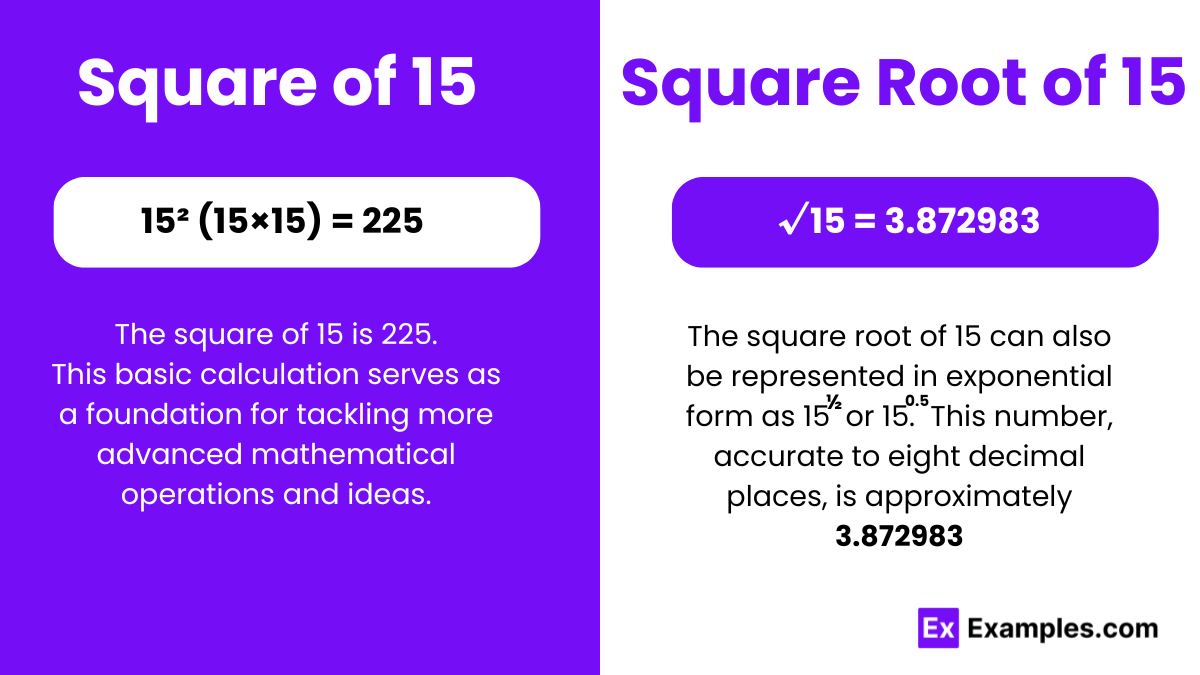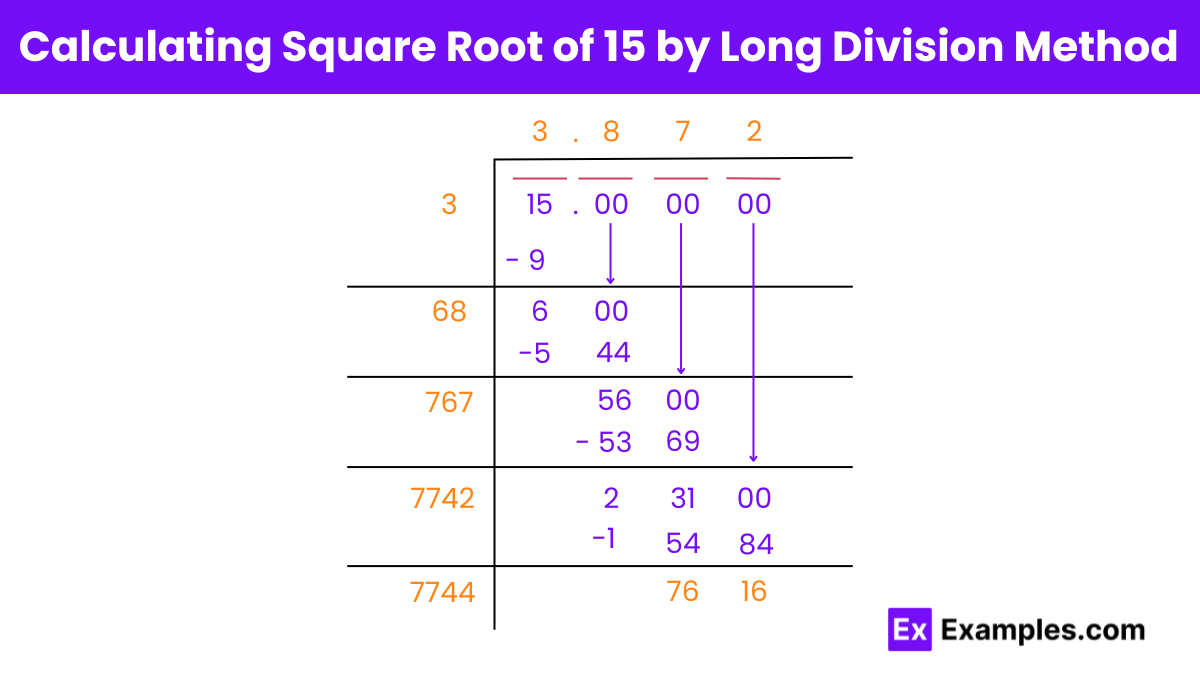What is the square of 15?
225
2250
150
30

The square of 15 is 225. When you multiply 15 by itself, the result is 225. This fundamental arithmetic operation is significant in various mathematical concepts and practical applications, such as calculating areas, volumes, and distances in geometry and engineering. Understanding squares and their properties is essential in mathematical reasoning and problem-solving.
Or
√15 = 3.872 up to three places of decimal.
The square root of 15 is an irrational number, approximately equal to 3.87298. It represents the number that, when multiplied by itself, equals 15. Finding the square root of 15 involves using mathematical methods such as long division or approximation techniques. In practical terms, it is used in calculations involving areas, distances, or other measurements in various fields like engineering, science, and finance.
Exponential Form of 15: (15)½ or (15)0.5
Radical Form of 15: √15
To determine whether the square root of 15 is rational or irrational, let’s examine the definitions of these terms.
Now, let’s consider the square root of 15. If we calculate it, we find that the square root of 15 is approximately 3.87298. This decimal representation neither terminates nor repeats, indicating that it is non-repeating and non-terminating.
Since the square root of 15 cannot be expressed as a fraction of two integers and its decimal expansion is non-repeating and non-terminating, we conclude that the square root of 15 is an irrational number.
Finding the square root of 15 involves various methods, each with its own unique approach and advantages. Here are six methods:

The long division method is a technique used to find the square root of a number by repeatedly subtracting perfect squares. In the case of finding the square root of 15, this method involves a step-by-step process of division and subtraction to approximate the square root.
Steps to Find the Square Root of 15 by Long Division:
By following these steps, the square root of 15, rounded to three decimal places, is approximately 3.873.
The perfect squares up to 15 squared are: 1, 4, 9, 16, 25, 36, 49, 64, 81, 100, 121, 144, 169, 196, 225.
No, the square root of 15 is not a whole number. It is an irrational number, approximately equal to 3.87298.
Yes, 15 has a perfect square factor, which is 3^2 (equal to 9).
No, 15 is neither a perfect cube nor a perfect square. It cannot be expressed as the cube or square of an integer.
Yes, the negative square root of 15 is a real number. It is approximately equal to -3.87298.
In conclusion, the square of 15 is 225, while the square root of 15 is approximately 3.87298. Understanding these numerical relationships is crucial in various fields such as mathematics, engineering, and physics. Squaring a number involves multiplying it by itself, while finding the square root entails determining the number that, when multiplied by itself, equals the given number.
Text prompt
Add Tone
10 Examples of Public speaking
20 Examples of Gas lighting
What is the square of 15?
225
2250
150
30
Find the square root of 225.
14
15
16
17
What is 15 squared minus 10?
215
220
225
230
What is the square root of 15 squared?
15
25
30
35
Calculate the square of 10 and add 25.
110
115
120
125
What is 20 squared divided by the square root of 25?
20
40
50
60
Calculate 15 squared plus 50.
275
300
325
400
What is the square root of 15 approximately?
3.85
3.87
3.88
3.89
Find the square of 15 using a different method.
220
225
235
250
Calculate the approximate square root of 15 to the nearest tenth.
3.8
3.9
4.0
4.1
Before you leave, take our quick quiz to enhance your learning!

